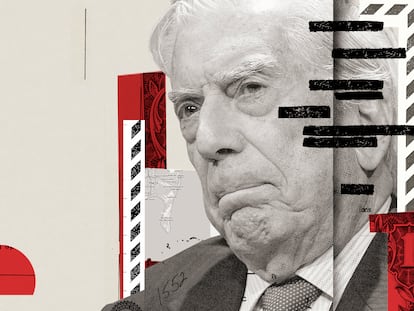Saudi Arabia chose the companies at the helm of the investment fund that hired Corinna Larsen
The Spanish Trade Ministry wanted to find these managers via a transparent public tender, but that request was denied. Spanish firms committed to investing €200m but the financial crisis put paid to the plan

The Spanish-Saudi Investment Fund that was created in 2007 during the government of former Spanish prime minister José Luis Rodríguez Zapatero, with the support of the then-king of Spain, Juan Carlos I, was led by two companies chosen by Saudi Arabia, Spanish officials who helped launch the initiative have told EL PAÍS. This fund hired Corinna Larsen, who was at one time in a relationship with Juan Carlos I, and set up its headquarters in Guernsey, a tax haven in the Channel Islands.
In 2007, Larsen asked a trust called Peregrine in New Zealand to bequeath the former monarch with “30% of the income originating from the Spanish-Saudi Investment Fund,” in the case of her death. The details of the structure of this arrangement form part of the Pandora Papers, a collaborative investigation by several international media outlets coordinated by the International Consortium of Investigative Journalists (ICIJ), and in which EL PAÍS and La Sexta television network have participated. This global investigation has been analyzing the secret files of 14 offshore service providers in opaque jurisdictions and exposing the firms that have enabled politicians, business leaders and celebrities in more than 90 countries to avoid paying taxes.
The lawyer for Larsen, who still uses her ex-husband’s surname, zu Sayn-Wittgenstein, claims the documents related to the trust are false. Larsen has not responded to questions from the ICIJ about her contractural relationship with the aforementioned fund.
A financial instrument such as this trust, or a trust fund, is a particularly opaque contract by which a testator leaves their entire estate of parts thereof entrusted to the good faith of their legal representative (the trustee) so that, in determinate cases and timeframes, it is transferred to another person (the beneficiary) or invested according to the instructions laid out by the testator. Trust funds are commonly used instruments offered by Swiss banks and asset managers to people in possession of significant wealth who are looking for tax avoidance, security and confidentiality.
The initiative to create the Spanish-Saudi Investment Fund came from the Spanish Foreign Affairs Ministry, which was led at the time by Miguel Ángel Moratinos, and from Juan Carlos I himself. But the management of the project was carried out by two foreign companies: British asset manager Cheyne Capital and Swiss-based Arox Infrastructure.
Cheyne Capital supposedly hired Larsen for the project and presented her as an associate at meetings in Madrid, according to sources who were involved with the fund. The firm, which is headquartered in London, did not respond to questions sent by this newspaper. “They told us that [Larsen] was working for them and that she would speak with investors. We knew nothing about her work nor who she was talking to,” says a source familiar with the launch of the fund.
“No one knew that she was hired. She appeared like another possible investor and said she would bring in money from other funds. We didn’t know either about her relationship with the king,” says a former minister in the Zapatero government, who was involved with setting up the initiative.
Spain and Saudi Arabia lent their full support for the launch of the fund. The ambassadors of both countries facilitated different meetings between the directors of Cheyne Capital, US investment bank Morgan Stanley and Corinna Larsen herself, with Spanish and Saudi authorities, according to one of the participants of the gatherings. According to Spanish news site El Diario, in June 2007, the Saudi press covered Larsen’s visit, in company of then-Spanish ambassador Manuel Alabar, to meet with Saudi Arabia’s Prince Alwaleed bin Talal.
On June 19, 2007, just days after her journey to Riyadh, Larsen attended the official presentation of the Spanish-Saudi Investment Fund in the Royal Palace of El Pardo. The event was also attended by then-industry minister Joan Clos, former Saudi finance minister Ibrahim bin-Abdul Aziz Al-Assaf and the president of the Spanish Business Confederation (CEOE) Gerardo Díaz Ferran, as well as other leading figures and representatives of the political and business world. “They introduced me to her at the event and she said to me, ‘This project is very important for Spain,’” a senior official says of his brief meeting with Larsen.
That same day, the late Saudi monarch Abdullah bin Abdulaziz visited Madrid for the first time and was styled a knight of the Order of the Golden Fleece by Juan Carlos I, the insignia of a 15th-century chivalric order and the highest decoration awarded by the Spanish Royal Household. During his speech at the event in El Pardo, Spain’s emeritus king commended the Spanish-Saudi Investment Fund.
British fund Cheyne Capital hired the US investment bank Morgan Stanley so that its executives in Madrid, London and Riyadh could make the presentations and capture companies that would supply the liquidity for the creation of the fund, according to a source from the banking sector. The promise was to participate in a huge prospective infrastructure plan in Saudi Arabia, the cost of which would run into several trillion dollars.
“In the first phase, the objective was to raise $500 million, 250 from Spanish companies and another 250 from Saudi capital,” explains a finance executive who took part in the launch. “There were conversations with a number of banks so that they would finance the fund’s future investments. If you obtain 500 of capital you could get another 4,000 of debt.”
A prospectus of the fund was published, and Morgan Stanley made a number of presentations. Some 14 Spanish companies, among them OHL, Sacyr, Caja Madrid (Bankia) and La Mutua, among others, committed to supplying around €200 million but the promised Saudi capital never exceeded €100 million. “The Saudi part did not work, and the Spanish companies said, it’s either all of us or none of us,” explains one of the participants. “The [global financial] crisis in 2008 and 2009 saw the end of the project, and in the end, no one ended up putting in what had been committed.”
The Fondo de Infraestructuras Hispano Saudí (or, Spanish Saudi Infrastructure Fund) was registered in Saint Peter Port, the capital of Guernsey, which is one of the Channel Islands. The archipelago, located off the coast of France, are known as “Crown Dependencies,” meaning that while not part of the United Kingdom, the latter country is responsible for them. They are self-governing, but are not sovereign states, and their economies are based on financial services given that they are considered tax havens. “In that era, the normal thing was that all of the issuers in capital markets would do it there in order to take advantage of the low tax rates,” explains one of the sources consulted by EL PAÍS.
Stuart Fiertz and Jonathan Lourie, the founders of Cheyne Capital and former executives at Morgan Stanley, were at the helm of this project. They traveled to Spain several times and took part in a number of meetings with Spanish executives, the sources consulted explain. On some occasions, they did so in the company of Larsen and presented her as their associate.
Fiertz was one of the directors of the Energy and Infrastructure G.P. Limited fund, which was created in Guernsey on April 10, 2007 and closed on August 23, 2012. To do this, the British investment fund used the company Cheyne Equity Partners, which was headquartered in Tórtola, another tax haven in the British Virgin Islands, and which was listed as the owner of 8,000 shares. Another 8,000 shares were registered in the name of Boreas Capital Limited.
The other company that was driving the project, Arox Infrastructure AG, was represented at meetings in Madrid by Ludovico Manfredi and Eberhard von Koerber, according to witnesses consulted. What’s more, both figure on the organizational structure of the aforementioned fund created in Guernsey, as this newspaper has been able to confirm via the island’s company registry. Both Cheyne Capital and Arox wanted to invest in the projects that the fund would implement.
Saudi imposition
Who decided that two foreign companies such as Cheyne Capital and Arox Infrastructures should manage the Spanish-Saudi fund? “We thought about putting it out for a transparent, competitive public bid, but the Saudis said it had to be these two companies,” explains a high-ranking official from the Trade Ministry who was involved in the launch. “No one from the Spanish administration took part in that.”
“The Saudi representative stated that to carry out a project of this magnitude a financial institution with a global reach was needed and they chose Morgan Stanley,” the same source explains. “The Spanish administration was not involved in the management of the contracts, managers and so on, because the Saudis were in control of that. We didn’t know anything about it because we didn’t put anything in, not a single euro. With Larsen we did not have any meetings because we didn’t provide the projects.”
In 2010, the executives from Cheyne and Arox called a meeting in Madrid with the Spanish companies who had committed to the project in order to inform them about the closure of the fund. At the same meeting, the costs were announced, which included several million euros spent on trips, meetings, attorneys and dealings that would be apportioned between all the parties involved. “I believe that it was closed in 2010, I’m not sure,” explains a source close to the project. “The Spanish companies paid something. The costs were not too onerous.” Other sources close to the companies involved state, however, that the costs were as high as €16 million.
Some of the Spanish firms that took part in the project admit their initial commitment, but none of those consulted has supplied to this newspaper the figure that was paid when the fund was eventually closed.
Tu suscripción se está usando en otro dispositivo
¿Quieres añadir otro usuario a tu suscripción?
Si continúas leyendo en este dispositivo, no se podrá leer en el otro.
FlechaTu suscripción se está usando en otro dispositivo y solo puedes acceder a EL PAÍS desde un dispositivo a la vez.
Si quieres compartir tu cuenta, cambia tu suscripción a la modalidad Premium, así podrás añadir otro usuario. Cada uno accederá con su propia cuenta de email, lo que os permitirá personalizar vuestra experiencia en EL PAÍS.
¿Tienes una suscripción de empresa? Accede aquí para contratar más cuentas.
En el caso de no saber quién está usando tu cuenta, te recomendamos cambiar tu contraseña aquí.
Si decides continuar compartiendo tu cuenta, este mensaje se mostrará en tu dispositivo y en el de la otra persona que está usando tu cuenta de forma indefinida, afectando a tu experiencia de lectura. Puedes consultar aquí los términos y condiciones de la suscripción digital.
More information
Archived In
Últimas noticias
Welcome to the post-religion era: The idea of Christianity as the absolute truth has become obsolete
‘I thought you would like it’: The risky sexual practice popularized by TV shows and TikTok
The digitalization of tourism: ‘They promise experiences and gave us the worst possible one’
Mexican peso defies uncertainty with forecasts of a new period of stability in 2026
Most viewed
- Sinaloa Cartel war is taking its toll on Los Chapitos
- Reinhard Genzel, Nobel laureate in physics: ‘One-minute videos will never give you the truth’
- Oona Chaplin: ‘I told James Cameron that I was living in a treehouse and starting a permaculture project with a friend’
- Why the price of coffee has skyrocketed: from Brazilian plantations to specialty coffee houses
- Silver prices are going crazy: This is what’s fueling the rally










































